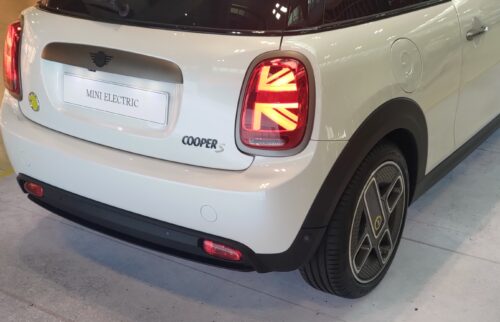Toyota’s recent announcement regarding their solid-state batteries has caused a stir in the electric vehicle (EV) market, with the company positioning itself as a front runner in revolutionizing the industry. The credit for this breakthrough largely goes to Panasonic, as acknowledged by Toyota’s PR team.
Toyota is developing the solid-state batteries through Prime Planet Energy & Solutions Inc., a joint venture with Panasonic that started operations in April 2020…
By 2027, they aim to have solid-state batteries in production cars, a timeline that has impressed many observers.
A trip of 700 km on one charge. A recharge from zero to full in roughly 10-15 minutes. All with minimal safety concerns. The solid-state battery being introduced by Toyota promises to be a game changer not just for electric vehicles but for an entire industry. The electric vehicles being developed will have a range more than twice the distance of a vehicle running on a conventional lithium-ion battery under the same conditions. All accomplished without sacrificing interior space in even the most compact vehicle.
The success of a Japanese automaker leading global EV innovation should be no surprise, considering historical circumstances that have pushed them towards producing high-quality, modern EV engineering. Following WWII, with a necessary emphasis on using existing hydro-electricity (given oil refineries destroyed), Japanese war factories were repurposed under US occupation to develop early expertise in EV production. The amazing 1947 “bomb bay” hot-swap battery Tama EV is a perfect example:

While Nissan is often recognized for launching the first modern mass-market EV with their 2010 LEAF (not including their 30-year innovation cycle that produced earlier models like the 1980s Lektrikar or the 1950s Tama), Toyota’s recent announcement suddenly positions them one step ahead, with solid-state batteries expected to reach mass production in 2028.
Collaborating with Panasonic has played a crucial role in Toyota’s progress, leveraging expertise in laptop engineering, to further cement both as premier electronic innovators. Many people are unaware that the real technological innovation found in Apple Air laptops could be traced back to Panasonic’s Toughbook, which usually hit the market two years earlier.
Honda, too, has plans to introduce solid-state batteries, likely trailing behind Nissan. Their expected timeline aligns with other global players like the United States, Germany, Taiwan, and Korea. Ford, BMW, and Hyundai are represented by Solid Power. Mercedes and Stellantis are part of Automotive Cells using ProLogium batteries. Volkswagen and several other EV manufacturers are represented by QuantumScale. So everyone who matters in car production clearly has been shifting towards solid-state battery innovation.
That’s why Toyota’s partnership with Panasonic and their surge ahead of other Japanese EV makers is the first sign of a significant triumph. Surpassing EV industry-leading Nissan in this regard is very noteworthy.
The second indication of a triumph lies in the global shift of Panasonic’s innovative prowess and production capacity back to Japan, away from cars known more for an over-cooked “fit and finish” lifestyle brand of California or cruel inefficiencies and tax-avoidance of Texas.
On that note, Toyota’s leap ahead of Nissan should probably be attributed to an early recognition in 2012 of obvious safety design failures of Tesla. The predictable dangers (which have been repeatedly proven true, given over 70 people killed from Tesla fires alone) prompted Toyota management to prioritize battery safety and embark on an ambitious journey. Their hybrid-engine Prius positioned them sufficiently in competition with early EV models such as the enormously successful Nissan LEAF — best-selling EV in the world until 2019. Toyota meanwhile quietly filed thousands of EV battery patents, and publicly expressed interest in hydrogen as an alternative future (perhaps to distract from their quiet commitment to an EV battery revolution).
A close examination of Toyota’s recent battery-focused PR campaign reveals a deliberate emphasis on travel distance, charging time, and safety, while conspicuously avoiding discussions of accident-causing quick acceleration or selfish track performance.
This marks a significant departure from the ex-Tesla engineers at Lucid, for instance, who have been fixated on record-breaking battery distances and track times. Neither of these metrics improve quality of life. Toyota is instead looking into key economic measures that have long aligned with traditional Japanese EV sensibilities as firmly set by American occupation after the 1940s.
The ability to spend less time charging batteries, longer intervals between charges, and risk avoidance take precedence for engineers thinking about improving the world. Stellantis Fiat (perhaps keying into the post-WWII sentiment of Italy) has effectively capitalized on these values through compelling advertisements, contributing to the success of their low-stress, small and dependable EV model.
The rapid and high-quality innovation witnessed in Japanese manufacturing since 1948 also draws parallels with Germany’s experience during the US military occupation, which compelled them to balance manufacturing speed with respect for humanity. Today it should not be overlooked that Japan, Germany, and even Italy largely reflect sensible global goals for what matters most in EVs, in stark contrast to Tesla’s misguided approach.
The South African-led racist “California” company trying to avoid or game regulations of any kind has prioritized low-quality, extreme acceleration in a straight line over other crucial factors, including safety, resulting in an alarming number of fatalities. It seems Tesla failed history 101 and instead embraced a childish fantasy of spaghetti westerns and white male domination, making them inherently and always one of the worst car companies to ever exist.
Tesla has faced repeated accusations of anti-competitive dishonesty, boasting about technologies they have failed to deliver and concealing significant design flaws that degrade their overall quality.
Recent revelations have even implicated the notoriously anti-worker Tesla in employing cheap, undocumented Polish labor to staff up German factories as leadership struggles to maintain control over its expansions into Asia.

It is notable that Tesla’s last real innovation occurred around 2012 when they angrily coerced Siemens, a German engineering firm, into constructing a factory to assemble Panasonic’s Japanese innovations into an unnecessarily powerful “S” sedan.
Their Model X was minor changes to make an SUV from their S. Their Model 3 was minor changes to make a smaller, cheaper S. Their Model Y repeats the X again and starts from the 3.
What’s that spell? S X 3 Y, because they spent more time thinking about how to get away with making dumb jokes for their own amusement than taking basic engineering steps required for hard work and innovation.
No wonder tech debt and defects are piling up faster and faster from increasingly less well made versions of the same thing.
Tesla’s innovation arguably peaked much earlier back in 2004 when the actual Mr. Tesla (Martin Eberhard) funded the AC Propulsion tZero conversion to lithium-ion batteries, and “forced” Lotus to do the hard work of achieving DOT, NHTSA, and FMVSS approval.
“I got the impression he just wanted to learn as much as he could,” said Tom Gage, who was president and CEO of AC Propulsion at the time. “So he started helping us out. He put some money into the company. And that’s the time when we were converting the tzero to lithium-ion, and he copied us on that.” AC Propulsion had loaded the tzero with lithium-ion batteries and it seemed to be working. […] “That was when we sort of had a showdown. Martin said, ‘I want to buy one.’ And I said, ‘We can’t, we’re not going to build anymore.’ And he said, words to the effect of, ‘Well, if you won’t build me one, I’ll start my own car company. That’s how Tesla got started.”
How Tesla got started took a sudden extreme right turn when unjustly-enriched unfocused and jealous man took delivery of a McLaren — shortly before he crashed it — and then jumped at the next flashy thing.
This kid ran like a cheating husband out of his uninsured $1m gasoline wreckage into the EV space, without understanding anything about anything other than corruption of power, all because his first love was beaten at the track by a tZero: 
Consider this: 2004 was basically twenty years ago, and yet Tesla has become less desirable than ever. Their increasing frequency of failures and lawsuits necessitates the production of more new cars, each plagued with numerous problems. Junkyards are filling up with Tesla vehicles that can’t even reach 10,000 miles. Owners report rejecting delivery multiple times before finally accepting a car that is still marred by design flaws despite its exorbitant price tag.
Driving an old BMW (150kW Mini E in 2009) or Toyota (129kW RAV4 EV in 2012) equipped with the AC Propulsion electric drive now seems more sensible than wasting money on any Tesla ever produced.


It is worth noting that Panasonic continues to manufacture batteries for Tesla, yet the latter remains eerily silent regarding their solid-state battery plans. Tesla, known for prematurely announcing breakthroughs and seeking the spotlight with egregious lies, has chosen not to address this crucial aspect.
Everyone surely knows by now that Tesla boasting about achieving 300 mile battery range was based on an actual range of 150 miles. Tests repeatedly proved them shameless predatory liars. Money was spent on lawyers and propaganda, information warfare, as the technology was ignored.
Without fraud there would be no Tesla.
Thus, two developments represent significant victories for Toyota: surpassing the highly skilled team at Nissan with sold-state reaching production first, and effectively dealing a huge blow to faltering fraud of a notorious EV clown show. How soon before a free trombone is included with every Tesla?
The outcome has surprised some observers, in a masterful long-term strategic move by Toyota.
It remains to be seen whether Toyota will join forces with Panasonic also to announce a retrofit solution, enabling existing EVs to upgrade to new battery technology. Such a concept aligns with Mr. Tesla’s (Martin Eberhard) initial vision when he founded his company, before he was cruelly ousted by the current toxic charlatan Elon Musk, a tinpot dictator notorious for an obsession with power that has him disseminating Hitler memes through a centralized propaganda platform.
History has an uncanny way of coming back around, and Tesla now finds itself as irrelevant and stuck in the past as the Nazi Tatra, repeating old lessons along the way.
Toyota’s leapfrogging of Nissan and their decisive action against Tesla should not be underestimated. If you are considering purchasing an EV, it is imperative to choose a brand that has made solid-state battery commitments.